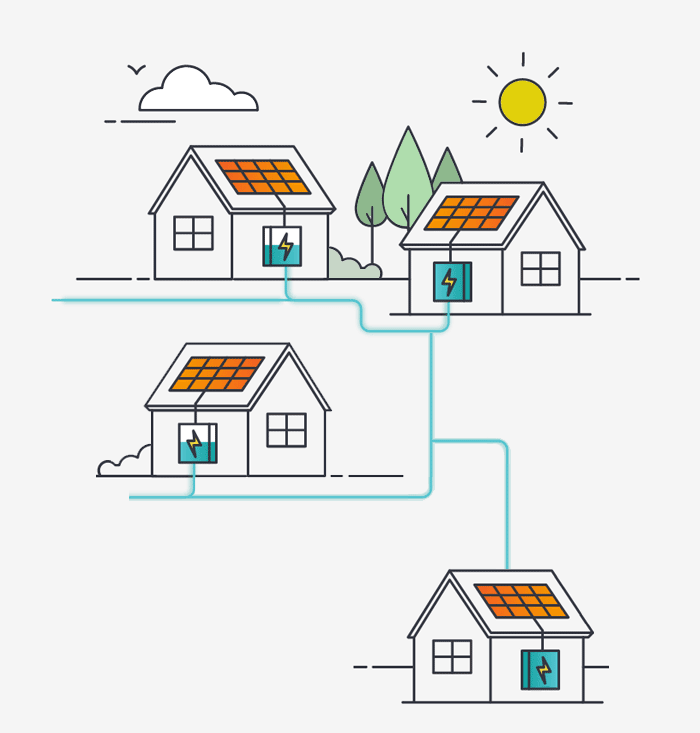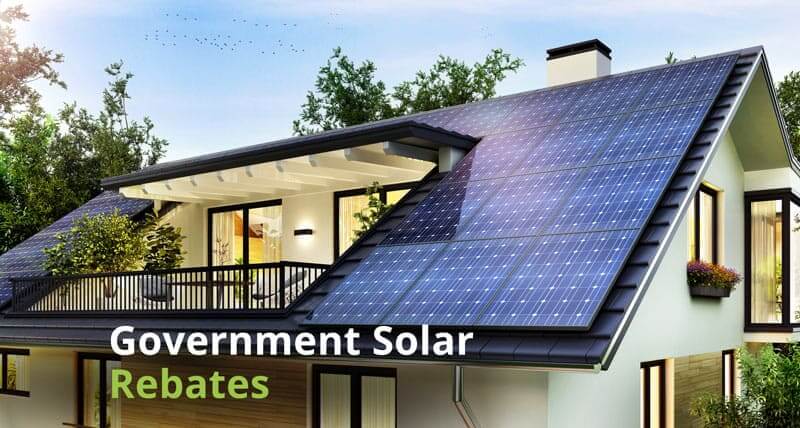Home Virtual Power Plants What Are the Benefits of Joining a VPP?
What Are the Benefits of Joining a VPP?
Lately, the phrase “Virtual Power Plant” has become quite buzzworthy in the realms of solar and battery tech. Our globe is rapidly shifting towards a more digital existence, where anything from cryptocurrency to web-based meetings is becoming standard fare. Of late, Virtual Power Plants, or VPPs for short, have been garnering a lot of attention within the energy industry.
Joining a VPP can be an appealing method to decrease your upfront costs and lower your energy bills. You can also sell power to others when the demand is higher. Governments of some developed nations have been committing to ensure that everyone should get access to green energy.
But the question arises, of how effective this Virtual Power Plant would be, whether it’s beneficial in the long run or not! But, what is a VPP? And why should anyone care?
Table of Contents
ToggleWhat is a VPP?

A Virtual Power Plant is a network of interconnected energy sources, primarily solar and battery systems that can provide energy to assist the grid or sell to individual homes for profit.
The VPP operator is in charge of centrally controlling and monitoring all of the batteries in the system. In general, a VPP is intended to generate value for both the VPP operator and the scheme members — typically by sharing the financial gains generated by the VPP.
Benefits of joining a VPP
To be honest, VPP benefits everyone. Simply said, being a member of a VPP program allows you to maximize the benefits of your home solar and battery system. There are environmental benefits, social benefits, economic benefits, and consumer benefits.
You will not only start receiving financial rewards for assisting the grid by storing excess electricity in your battery (via VPP community credits and other savings that can help lower your energy bills), but you will also be assisting in the creation of a cleaner, smarter, and more efficient energy system for the future.
Let’s understand more about how it benefits many;
Selling power during peak demand periods
The most common and obvious source of money for a VPP is selling power by discharging batteries during high-demand periods. While you may receive a set rate or time of use rate for energy from your power company, the wholesale market is always changing.
The wholesale electricity price typically ranges between 4c and 10c per kWh, but the price might vary significantly during the year. For instance, at 6 p.m. on May 17, 2021, the wholesale power cost in NSW, VIC, and SA was roughly $6 per kWh.
At this moment, all VPPs in those states would have discharged as much power as possible into the system, receiving $6 per kWh. They may provide a very attractive rate back to VPP users for each kWh supplied while still making a healthy profit.
Contributing to a more stable grid
To function safely and effectively, all power networks require energy generation and the demand for electricity to be balanced. If one side of this equation changes or varies, it might result in power outages and blackouts.
Including the major power plants, there are smaller, more agile, and flexible power plants (typically gas) that can scale up and down quickly. These plants serve the markets for Frequency Control Ancillary Services (FCAS).
Plants in this market are sometimes paid to ‘stand by’ and be ready to turn on at a moment’s notice. VPPs can function in this market since they can quickly discharge or charge power from the grid.
In some circumstances, the batteries in these types of setups will not be able to drain below a specific level since they must have enough power on backup to meet the grid’s demands.
Feed-in tariffs
How you are compensated for your involvement in a VPP is determined by how each program is set up. Some systems provide a benefit-sharing arrangement via an appealing or bonus Feed-In Tariff each time the batteries are used. Other programs provide an upfront discount on the cost of the battery or a predetermined monthly payment.
Renewable resource holders can resell unused energy to the power provider for revenue. The software in VPPs can do this intelligently to optimize revenues. Based on the owner’s financial and energy objectives, the VPP can be programmed to:
- Weather and load management forecasts should be used.
- Analyse both current and historical data.
- Price changes during the day provide market cues.
What is the significance of VPPs?
A VPP’s dependable supply of solar energy not only helps stabilize the electricity network (resulting in fewer blackouts during peak demand times), but it is also a more renewable power alternative than a traditional power plant.
A virtual power plant lowers the need for coal. This is because, whereas traditional power plants create energy from fossil fuels such as coal, which have negative consequences on health and the environment, solar virtual power plants produce electricity from a cleaner, renewable energy source (the sun).
How does a VPP work?
As the national grid’s power supply and demand fluctuate, this network of connected households band together to assist the grid, either by releasing energy onto it or storing energy from it. In exchange, member homeowners are compensated each time their battery storage is used in this manner.
- A virtual power plant connects many sources focused on one region, such as wind and solar power plants, battery banks, biomass plants, and traditional energy-producing sources while coordinating them through a remote software system.
- When a consumer runs out of energy, he can access alternative sources, or if a producing point has excess energy, it can be shared with other consumers.
- The VPP operator charges or discharges energy from the batteries using WiFi technology and sophisticated software and trades it on the National Energy Market (NEM).
- Small amounts of energy stored in individual batteries can be converted into significant amounts of energy to assist support the grids in times of need when numerous systems collaborate.
- A VPP works by leveraging software and communications to make distributed energy resources visible to a retailer and/or the network.
- The generating and storing assets can be owned by a central owner (such as an electrical retailer) and located at consumers’ locations, with the power paid for by the consumer. They can also be owned by many businesses and administered centrally by a service provider.
- The Virtual Power Plant members are linked to the VPP’s central control system via a remote control unit. As a result, the central control system can efficiently monitor, manage, and control all resources.
- Control commands and data are transmitted over encrypted data connections that are isolated from other data traffic.
- Moreover, to operate each individual asset in the Virtual Power Plant on an optimized schedule, the central control system, like larger conventional energy sources, uses a unique algorithm to react to balancing reserve directives from transmission system operators.
- The bidirectional data interchange between individual plants and the VPP not only allows for the transmission of control directives but also offers real-time data on the capacity utilization of the networked units.

Tips for homeowners
Although the concept of joining a VPP is still relatively new, it is swiftly gaining traction as households seek to benefit from the financial incentives it provides.
Consider the following factors when looking for a VPP:
- What do you know about the Virtual Power Plant operator and electricity retailer (if they aren’t one and the same)?
- Which batteries are eligible for the VPP?
- What is the total cost of the system (including installation and additional solar panels if necessary)?
- How will you be compensated for joining the VPP (annual, monthly, or daily reward payments, a cheaper battery, or an exclusive retail offer)?
- What power plan will you choose, and how do the consumption charge, daily supply price, and Feed in Tariff (FiT) compare to other retail options?
- How much battery capacity can you set aside for backup protection?
- Is there a contract term and/or a price for terminating the contract early?
- How much electricity is the VPP operator authorized to drain from your battery each year under the terms of your contract?
How common are VPPs?
There are few developed nations that have become big players in the VPP sector, and most of them have launched various VPP programs. While VPPs are still in their early stages, one such country among other nations is Australia which is once again at the forefront of testing the concept.
The first large-scale VPP experiment took place in Adelaide from August 2016 to September 2019, with 1,000 residential systems installed and connected during that time.
Another VPP that is now being observed is made up of 1,000 Tesla batteries put in social housing in South Australia. In theory, this VPP provides nearly ideal conditions for testing the concept’s viability. Moreover, the South African government has lofty ambitions to expand to 50,000 low-income families to build the world’s largest VPP, a 250 MW/650 MWh system.
A handful of other VPPs are in the planning or early implementation stages.
Virtual power plants in Australia
There are various VPPs in Australia that use batteries that are qualified for the Home Battery Scheme subsidy. One of the most famous VPP programs in Australia is The Solar Victoria Virtual Power Plant (VPP) pilot program.
Solar Victoria Virtual Power Plant (VPP) pilot programme
This is a new effort aiming to connect Victorian homeowners and cut energy expenses by utilising renewable energy sources such as solar panels and batteries.
By making it easier for Victorian residents to join a VPP programme, Solar Victoria is providing a groundbreaking opportunity to participate in powering our energy future. They are expanding the Solar Homes solar battery refund programme to include the ability to participate in an authorised virtual power plant operation.
Virtual Power Plants (VPPs) provide a variety of networks enabling solar battery systems to share power.
These networks provide individual arrangements with a variety of advantages and programme structures that will allow you to power up your solar panels and put you in control of your electricity with other Victorians.
The VPP pilot programme provides eligible Victorians who join an approved VPP programme with increased solar battery rebates at a fixed rate of $4,174 towards the initial cost of a solar battery and installation.
This will lead to lower energy bills, payments for sharing your stored energy, and improved system resilience.
Households must meet the following criteria to be eligible for this programme
- The property already has or is planning to install solar PV panels with a capacity of at least 5kW in conjunction with the solar battery installation.
- To properly connect a battery to the grid, you must first receive pre-approval from your Distributed Network Service Provider (DNSP).
- The energy storage option is on Solar Victoria’s authorized battery list, and there is no current energy storage system on the property.
- They are the property owners and occupants where the system will be implemented.
- All proprietors’ combined household taxable income is less than $180,000 per year (based on your Australian Tax Office Notice of Assessment).
- It is an existing property with a current council rate notice value of less than $3 million.
- They haven’t already received a reimbursement from the Solar Homes Program as an owner-occupier.
- The property address has never participated in the Solar Homes Program before.
Table of Contents
Toggle




